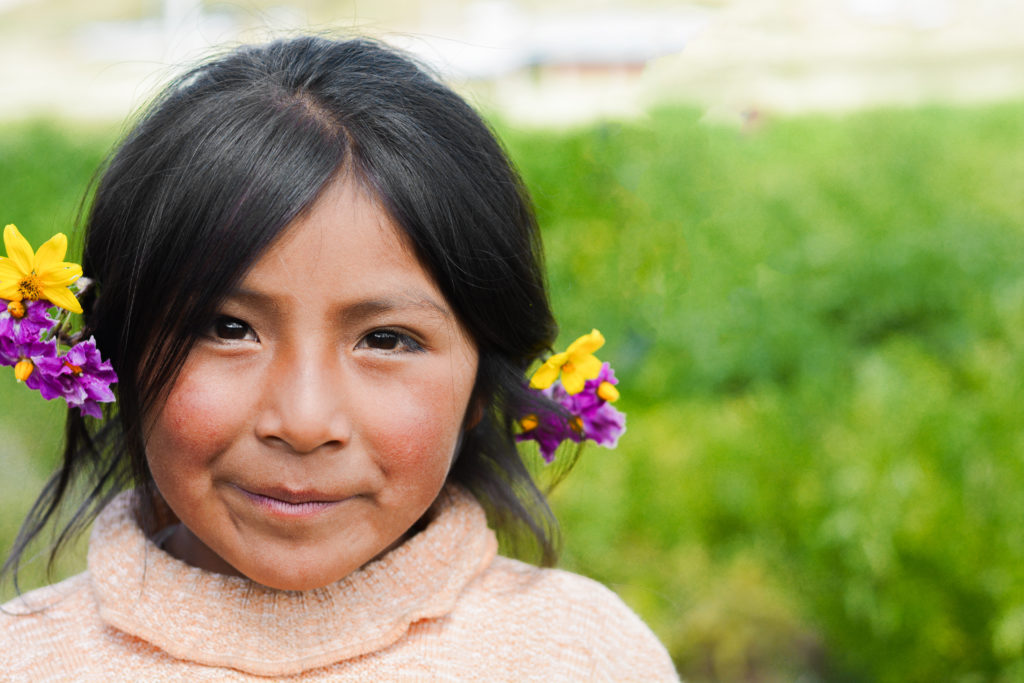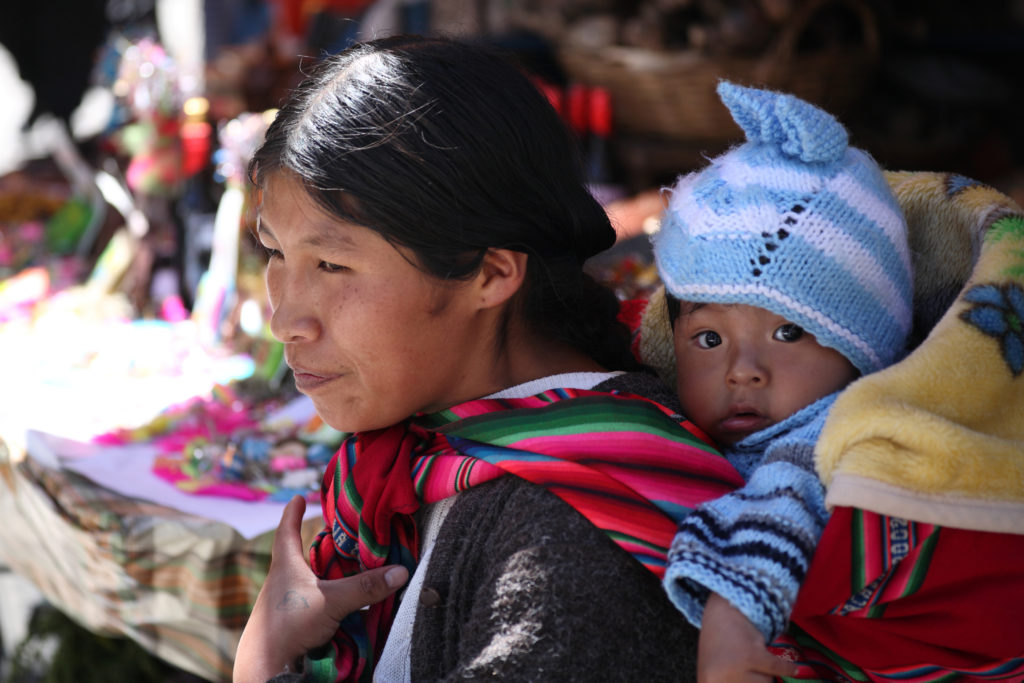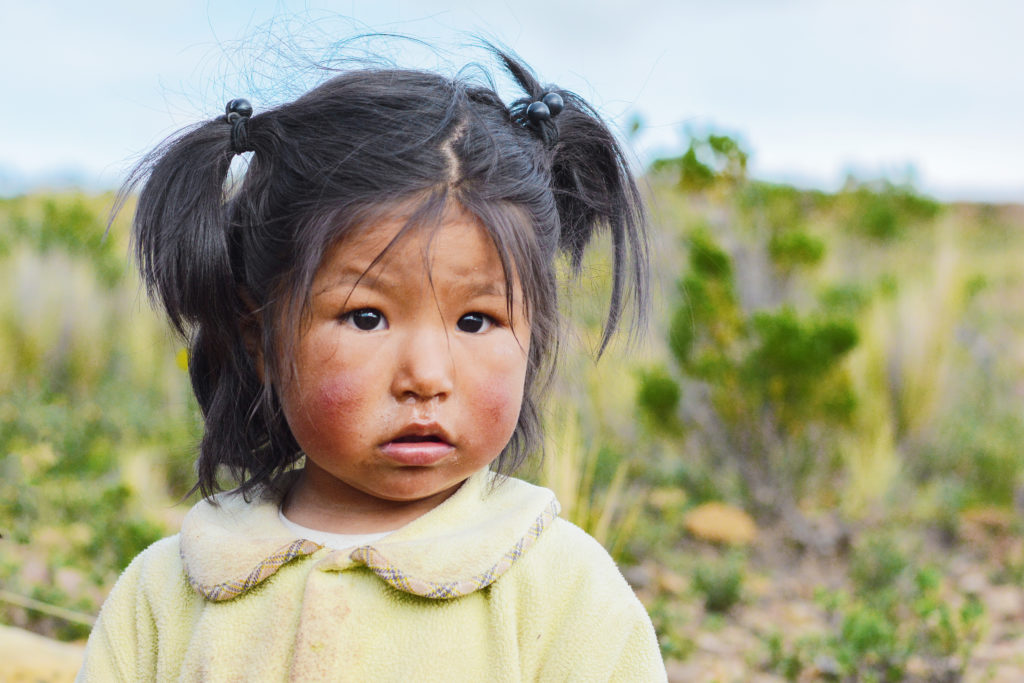Indigenous children face many challenges in asserting their fundamental rights, including poverty, discrimination and the endangerment of their culture. Confronted with all kinds of scourges that threaten the protection and application of their rights, States must put in place special protection that takes into account their daily challenges, linked to the past of colonisation.

Who are indigenous children?
In order to know what an indigenous child is and what his or her rights are, it is important first to define what ‘indigeneity’ is and the communities that derive from it are. There is no official definition – the United Nations Declaration on the Rights of Indigenous Peoples makes no mention of it (Indigenous Peoples, n.d.).
Nevertheless, by combining several sources, it is possible to understand what an indigenous community is. According to United Nations documents, an indigenous community is a social and cultural group united by collective ancestral ties to the land and resources from which it originally sprang (Indigenous Peoples, 2021). Through its customs and organic structure, the indigenous community is distinct from the dominant culture of the State, the most important criterion remaining self-identification (Committee on the Rights of the Child, 2009, § 19).
Indigenous communities occupied territories long before they were invaded or colonised by today’s dominant cultures (UNHCR, 2023). They were decimated and their rights abused by colonising societies (Henderson & Bell, 2009; Hadden, 2019; Wolfe, 2006).
This past is still reflected today, with high levels of inequality and discrimination, as well as the loss of many practices and customs (UNHCR, 2023; Culture, n.d.). For example, indigenous populations are more likely to be poor and vulnerable (United Nations Development Programme, 2021), with a threefold-higher probability of living in extreme poverty, suffering from malnutrition, and lacking social protection (UN Development Programme, 2021).
Indigenous children and international law
The United Nations General Assembly adopted the United Nations Declaration on the Rights of Indigenous Peoples on 13 September 2007. In a nutshell, this document aims to protect indigenous communities and their special characteristics, following the model of the Universal Declaration of Human Rights (United Nations General Assembly, 1948).
For example, article 14 highlights the right to education and the transmission of ancestral knowledge, particularly to children, in order to safeguard the various indigenous cultures (United Nations General Assembly, 2007). In the same vein, Article 17 seeks to protect indigenous children from economic exploitation.As every child is supposed to have a nationality, as mentioned in articles 7 and 8 of the International Convention on the Rights of the Child 1(UN General Assembly, 1989), and an identity, indigenous children fall under the protection of international treaties ratified by their country of residence, and therefore under that of the CRC.
Indigenous children must therefore enjoy the same rights and protections as any other child, while respecting the special characteristics linked to their indigeneity. As well as being the first legally-binding international instrument to include the specific needs and rights of children, the CRC was also the first document to include specific references to indigenous children (Freemantle, n.d.).
These are intended to promote indigenous culture, whether to make it easier for indigenous children to understand issues (United Nations, 1989, art. 17) or to take account of the child’s origins when protecting him or her from his or her family environment (United Nations, 1989, art. 20). Article 30 clearly states that “a child belonging to such a minority or who is indigenous shall not be denied the right, in community with other members of his or her group, to enjoy his or her own culture, to profess and practise his or her own religion, or to use his or her own language”.
As the CRC is a general document, the Committee on the Rights of the Child2 publishes general observations to broaden the scope of the articles, interpret its content and help States to meet the demands associated with applying its provisions. This was the case for indigenous children with General Comment No. 11, published in 2009 and entitled ‘Indigenous children and their rights under the Convention’.
In this statement, the Committee recalls the existence of other international instruments to be taken into account when defining the rights of indigenous children, namely the International Convention on the Elimination of All Forms of Racial Discrimination (1965); the International Covenant on Civil and Political Rights (1966);; the International Covenant on Economic, Social and Cultural Rights (1966); and the United Nations Declaration on the Rights of Indigenous Peoples of 2007 (Committee on the Rights of the Child, 2009, § 6-8, 82).
In addition to these documents, the 2016 American Declaration on the Rights of Indigenous Peoples, ILO Convention No. 169 (the Indigenous and Tribal Peoples Convention), the UN Permanent Forum on Indigenous Issues, the Expert Mechanism on the Rights of Indigenous Peoples and the existence of the Special Rapporteur on the Rights of Indigenous Peoples must also be taken into account, depending on the State Party (Indigenous Peoples, 2021).
Challenges facing indigenous children
Even though there is increased awareness of the rights of indigenous peoples in international forums, indigenous children are among the most marginalised groups in any country (Freemantle, n.d.), to the extent that the Committee felt the need to clarify the provisions of the CRC with a General Comment.
Absence of the right to education
The right to education is a human right recognised by various instruments of international law – notably the International Covenant on Economic, Social and Cultural Rights, the Convention on the Elimination of All Forms of Discrimination against Women and the CRC (Right to Education, n.d.). For the Committee on Economic, Social and Cultural Rights, ‘education is both a fundamental right in itself and one of the keys to the exercise of other rights inherent in the human person’. (Committee on Economic, Social and Cultural Rights, 1999, § 1)
However, indigenous children are less likely to be enrolled in school and are at greater risk of dropping out, resulting in a higher-than-average illiteracy rate (Committee on the Rights of the Child, 2009, § 59).
Several factors hinder the application of this right (Education, n.d.; Committee on the Rights of the Child, 2009, § 59):
– The lack of respect and resources dedicated to indigenous communities.
– Language barriers, and the lack of culturally appropriate or bilingual content.
– The precarious situation of indigenous children, which has an impact on their well-being and ability to learn (e.g. malnutrition).
– The ethnic and cultural discrimination, gender discrimination, racism, violence and sexual abuse to which these populations may be subjected, creating a hostile environment.
– Having to adapt to the non-native system, which is very different: based on individualism and competition, to the detriment of the community lifestyle based on cooperation and collective well-being generally advocated by native communities.
– The lack of appropriate educational content for the indigenous way of life: what indigenous children learn is difficult to apply when they return to their communities.
– The need to assimilate into the non-native system, and the difficulty for children of having to cope with two societal structures (Education, n.d.).
The right to education thus clashes sharply with indigenous children;’s right to culture. For example, the fact that there are few or no bilingual programmes, adapted for indigenous children (which is contrary to Article 30 of the CRC), represents an obstacle not only to education but also to the preservation of the child’s indigenous culture (Education, n.d.).
No right to culture
Article 30 of the CRC, the right to culture, is particularly highlighted in the Committee’s Observation No. 11 (Committee on the Rights of the Child, 2009). Both proclaim the individual and collective right to have one’s own cultural and religious life and to use one’s own language (Committee on the Rights of the Child, 2009, § 16). The Committee stresses, it should be noted, that “the right of indigenous peoples to exercise their cultural rights may be closely associated with the use of their traditional territory and the use of its resources” (Committee on the Rights of the Child, 2009, § 16).
Furthermore, the Committee and the Committee on the Elimination of Racial Discrimination call on States Parties to “recognise that the culture, history, language and way of life of indigenous peoples enrich the cultural identity of a State, to respect them as such, and to promote their preservation” (Committee on the Rights of the Child, 2009, § 18). Similarly, for the Committee, indigenous children must be able to express their culture, language and religion for a State to respect its human rights commitments,. It is, therefore, necessary for the State to cooperate with its various indigenous communities in orderly to finally implement the rights of indigenous children (Committee on the Rights of the Child, 2009, § 82).
Lack of right to health
One major problem that emerges is discrimination in several sectors, such as health and education, which violates Article 2 of the CRC (Committee on the Rights of the Child, 2009, § 5 and 6). In terms of health, the difficulty of accessing the health system and the challenges of systemic racism have an impact on indigenous children’s well-being. These populations are generally in poorer health than non-native children. This trend is found in both developed and developing countries (Committee on the Rights of the Child, 2009, § 49).
This is particularly true for indigenous children living in rural and/or remote communities or in situations of conflict or population displacement (Committee on the Rights of the Child, 2009, § 51). Rates of infant and child mortality, malnutrition and childhood diseases are higher in indigenous communities (Committee on the Rights of the Child, 2009, § 34).
Lack of right to protection

Indigenous children suffer discrimination and are part of socially, economically, politically and culturally marginalised communities. This fact is compounded by the strong historical legacy of colonisation. As a result of conflict, ethnic and/or religious persecution, violence, and the effects of climate change, indigenous communities may need particular protection, as recognised by the UNHCR (UNHCR, 2023). Children are by definition a vulnerable population. The language barrier and difficulties in access to education, due in particular to the lack of indigenous interpreters, reinforce this need for protection.
In addition, as the borders of their territories often do not correspond to state borders, difficult or even dangerous situations can arise (UNHCR, 2023). These situations increase the vulnerability of children from indigenous communities.
Furthermore, children require special attention in the protection systems of indigenous communities. The Committee has, moreover, warned that the critical situation of indigenous children has already been brushed aside for broader, more collective considerations, such as land rights or political representation. However, as the Committee points out, “the best interests of the child must not be neglected or disregarded in favour of the best interests of the group”. (Committee on the Rights of the Child, 2009, § 30).
Exploitation
Indigenous children being particularly vulnerable, they are all the more so in the face of various forms of economic and sexual exploitation and in armed conflicts, risking child slavery and trafficking, sexual exploitation, hazardous labour and debt bondage (Committee on the Rights of the Child, 2009, § 70, UNHCR, 2023). Girls are vulnerable to sexual exploitation (Committee on the Rights of the Child, 2009, § 72) and therefore to child prostitution, while boys tend to be victims of recruitment when an armed conflict is taking place in the country (Committee on the Rights of the Child, 2009, § 16). Vulnerability to these scourges is heightened, once again, by situations of statelessness (Committee on the Rights of the Child, 2009, § 72).
Poverty

Indigenous peoples account for 15% of the world’s population living in extreme poverty (Indigenous Peoples, 2021), while the international community considers that 6.2% of the world’s population is indigenous, i.e. more than 476 million indigenous people spread across over 90 countries (United Nations Development Programme, 2021). This has an impact on their life expectancy, which can be as much as 20 years shorter than that of the rest of the world’s population (Indigenous Peoples, 2021).
Indigenous children are particularly vulnerable to poverty (Committee on the Rights of the Child, 2009, § 34 and 70, UNHCR, 2023). As well as having a negative impact on their survival and development (Committee on the Rights of the Child, 2009, § 34), this increases their risk of economic exploitation in the worst forms, reinforced by the rural exodus (Committee on the Rights of the Child, 2009, § 72).
These precarious and discriminatory situations have a definite impact on the rights of indigenous peoples and therefore on the children of these communities, giving rise to a number of challenges in ensuring that these rights are applied and respected.
Statelessness
To be able to claim rights, it is important for a person, whatever their age, to have a nationality. Statelessness means that the person has no nationality and cannot benefit from the protection of any state, least of all the one in which they live. As a result, stateless people face many obstacles in guaranteeing their fundamental rights, such as education and health (About statelessness, n.d.; Education, n.d.).
Indigenous communities are particularly prone to statelessness (UNHCR, 2023). Statelessness notably occurs when a newborn child is not registered, and the percentage of non-registration at birth is higher for indigenous children than for non-indigenous children (Committee on the Rights of the Child, 2009, § 41), which poses a major problem.
When indigenous children are not registered at birth, they do not have access to state protection and respect for their rights, which can make the violation of their rights invisible. Once they are adults, they cannot actively participate in society (Education, n.d.).
Written by Juliette Bail
Proofread internally by Aditi Partha
Translated by Linda Cockinis
Revised by Alex Macpherson
Updated on 18 June 2023
Bibliography:
À propos de l’apatridie. (s.d.). Consulté le juin 17, 2023, sur Haut Commissariat des Nations unies pour les réfugiés: https://www.unhcr.org/ibelong/fr/quest-ce-que-lapatridie/
Assemblée générale des Nations Unies. (1948, décembre 10). La Déclaration universelle des droits de l’homme [Texte imprimé]. Consulté le juin 3, 2023, sur Nations Unies: https://www.un.org/fr/universal-declaration-human-rights/
Assemblée générale des Nations Unies. (1989, novembre 20). Convention relative aux droits de l’enfant. Consulté le juin 4, 2023, sur OHCHR: https://www.ohchr.org/fr/instruments-mechanisms/instruments/convention-rights-child
Assemblée générale des Nations Unies. (2007, septembre 13). Déclaration des Nations Unies sur les droits des peuples autochtones. Consulté le juin 4, 2023, sur Nations Unies: https://www.un.org/development/desa/indigenouspeoples/wp-content/uploads/sites/19/2018/11/UNDRIP_F_web.pdf
Bergeron, O. (2019, mars 5). L’intimidation vécue par les populations autochtones. Consulté le juin 17, 2023, sur Centre d’expertise et de référence en santé publique – INSPQ: https://www.inspq.qc.ca/intimidation/autochtones
Comité des droits de l’Enfant. (2009, février 12). Observation n°11 : les enfants autochtones et leurs droits en vertu de la Convention. Consulté le juin 3, 2023, sur OHCHR: http://docstore.ohchr.org/SelfServices/FilesHandler.ashx?enc=6QkG1d%2FPPRiCAqhKb7yhsqIkirKQZLK2M58RF%2F5F0vHfIzasSO0EEdqdWmq9j7BR9v9%2F3qjm26iQuysaPAzxEHtB%2Fk1TP65u97EvgtcuOHzfNBOKa2O%2Bmgqkr9YvAB8S
Comités des droits économiques, sociaux et culturels. (1999, décembre 8). Observation générale n°13 : Le droit à l’éducation. Consulté le juin 17, 2023, sur OHCHR: https://docstore.ohchr.org/SelfServices/FilesHandler.ashx?enc=4slQ6QSmlBEDzFEovLCuW%2BKyH%2BnXprasyMzd2e8mx4cYlD1VMUKXaG3Jw9bomilLrIh8ia0WISYZGeWr0fc2541K0m2M7MEBasyxRekKmJDCRnq49NidcIUWdJqsGbuH
Culture. (s.d.). Consulté le juin 17, 2023, sur Department of Economic and Social Affairs : Indigenous Peoples – United Nations: https://www.un.org/development/desa/indigenouspeoples/mandated-areas1/culture.html#:~:text=Indigenous%20cultures%20threatened%20with%20extinction.&text=However%2C%20Indigenous%20Peoples%20have%20continued,many%20parts%20of%20the%20world.
Droit à l’éducation. (s.d.). Consulté le juin 13, 2023, sur Ligue des droits et libertés: https://liguedesdroits.ca/cat/themes/droits-economiques-sociaux-et-culturels/droit-a-leducation/
Economic and Social Council. (2010, avril 29). Indigenous Peoples Excluded from Political Power, Ejected from Lands, Faced Corporations Bent on Destroying Life-Giving Forests, Permanent Forum Told. Consulté le juin 17, 2023, sur Meetings Coverage and Press Releases – United Nations: https://press.un.org/en/2010/hr5021.doc.htm
Education. (s.d.). Consulté le juin 17, 2023, sur Department of Economic and Social Affairs Indigenous Peoples – Nations Unies: https://www.un.org/development/desa/indigenouspeoples/mandated-areas1/education.html
Freemantle, J. (s.d.). Les enfants autochtones – Leurs droits fondamentaux, leur taux de mortalité et les Objectifs du Millénaire pour le développement. Consulté le juin 4, 2023, sur Nations Unies: https://www.un.org/fr/chronicle/article/les-enfants-autochtones-leurs-droits-fondamentaux-leur-taux-de-mortalite-et-les-objectifs-du
Hadden, J. (2019, Février 19). ‘Little Ice Age’ caused by death of 55-million Indigenous people after colonization: study. Consulté le juin 17, 2023, sur Global News: https://globalnews.ca/news/4924534/little-ice-age-death-55-million-indigenous-people-colonization-study/#:~:text=The%20elimination%20of%20nearly%2055,century%2C%20a%20recent%20study%20finds
Henderson, W. B., & Bell, C. (2009, Décembre 11). Droits des Autochtones au Canada. Consulté le juin 17, 2023, sur L’encylopédie canadienne: https://www.thecanadianencyclopedia.ca/fr/article/droits-ancestraux
Human Rights. (s.d.). Consulté le juin 17, 2023, sur Department of Economic and Social Affairs : Indigenous Peoples – United Nations: https://www.un.org/development/desa/indigenouspeoples/mandated-areas1/human-rights.html
Indigenous people. (s.d.). Consulté le juin 17, 2023, sur Amnesty international: https://www.amnesty.org/en/what-we-do/indigenous-peoples/
Intersectionnalité. (s.d.). Consulté le juin 17, 2023, sur Ligue des droits et libertés: https://liguedesdroits.ca/lexique/intersectionnalite/
Les États doivent éduquer les enfants des peuples autochtones dans leur langue maternelle (expert). (s.d.). Consulté le juin 17, 2023, sur ONU Info – Nations Unies: https://news.un.org/fr/story/2020/03/1063731
Peuples autochtones. (s.d.). Consulté le Juin 13, 2023, sur Nations Unies: https://www.un.org/fr/fight-racism/vulnerable-groups/indigenous-peoples
Peuples autochtones. (2021, mars 19). Consulté le juin 3, 2023, sur La Banque mondiale: https://www.banquemondiale.org/fr/topic/indigenouspeoples
Peuples autochtones. (2021, mars 19). Consulté le juin 17, 2023, sur Banque mondiale: https://www.banquemondiale.org/fr/topic/indigenouspeoples#2
UNHCR. (2023, mars 7). Minorités nationales, ethniques, religieuses et linguistiques et peuples autochtones. Consulté le juin 2, 2023, sur Le Haut Commissariat des Nations unies pour les réfugiés: https://emergency.unhcr.org/fr/protection/minorités-nationales-ethniques-religieuses-et-linguistiques-et-peuples-autochtones
United Nations Development Programme. (2021, août 1er). 10 choses à savoir sur les peuples autochtones. Consulté le juin 3, 2023, sur UNDP: https://stories.undp.org/6f447fb250957c4b464307f1dff45302
Wolfe, P. (2006, Décembre 21). Settler colonialism and the elimination of the native. Consulté le juin 17, 2023, sur Journal of Genocide Research: https://www.tandfonline.com/doi/full/10.1080/14623520601056240

